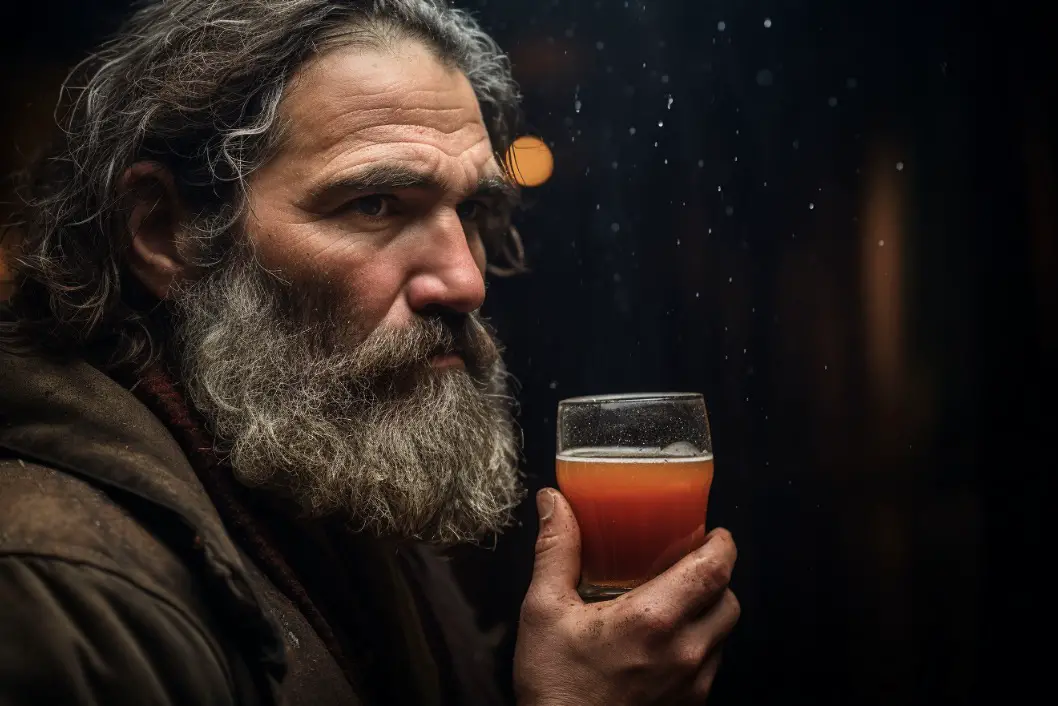Making hard cider is a process that has been around for centuries, and it has come a long way since its humble beginnings. Today, hard cider is a favorite among many, and the methods and ingredients used to make it have been fine-tuned to create a variety of flavors and styles. One question that often comes up when discussing the process of making hard cider is whether or not yeast is necessary for the fermentation process. In this blog post, we will explore this question in depth, discuss wild yeast and natural fermentation, and offer some insight into the world of hard cider making.
To answer the main question directly: No, you do not necessarily need to add yeast to make hard cider, as wild yeast present on the apples and in the environment can kickstart the fermentation process. However, adding commercial yeast can provide more control over the fermentation process and the final flavor of the cider.
The Role of Yeast in Fermentation
In order to understand the role of yeast in making hard cider, it’s important to first understand the process of fermentation. Fermentation is a natural process that occurs when microorganisms, such as yeast, convert sugars into alcohol and carbon dioxide. This is what turns the sweet apple juice, or “must,” into the alcoholic beverage we know as hard cider.
Yeast is a key player in this process, as it consumes the sugars in the apple juice and produces alcohol and carbon dioxide as byproducts. Without yeast, the fermentation process would not occur, and you would be left with non-alcoholic apple juice.
Wild Yeast vs. Commercial Yeast
There are two main types of yeast that can be used in the fermentation process: wild yeast and commercial yeast.
Wild Yeast
Wild yeast is naturally occurring yeast that can be found on the skins of apples, as well as in the air and environment. When making hard cider, wild yeast can begin the fermentation process without the need for any added yeast. This is known as spontaneous fermentation and has been used to make hard cider for centuries.
However, relying on wild yeast can be unpredictable, as the types of yeast present can vary greatly depending on the apples used and the environment in which the cider is made. This can lead to inconsistent results, with ciders varying in flavor, aroma, and alcohol content.
Commercial Yeast
Commercial yeast, on the other hand, is a cultivated strain of yeast that has been specifically developed for use in fermentation. There are many different strains of commercial yeast available, each with its own unique characteristics and flavor profiles. By using commercial yeast, you can have more control over the fermentation process and the final flavor of your cider.
Natural Fermentation
Natural fermentation is the process of allowing wild yeast and other microorganisms present on the apples and in the environment to ferment the apple juice without the addition of commercial yeast. This process can result in a more complex and unique flavor profile, as the wild yeast and other microorganisms contribute their own flavors and characteristics to the cider.
However, as mentioned earlier, natural fermentation can be unpredictable and may result in inconsistent results. It may also take longer for the cider to ferment, as the wild yeast may not be as efficient at converting sugars to alcohol as commercial yeast.
Factors to Consider When Choosing Yeast
When deciding whether to use wild yeast, commercial yeast, or a combination of both for your hard cider, there are several factors you should consider:
Flavor Profile
The yeast you choose will have a significant impact on the final flavor profile of your cider. Wild yeast can create a more complex and unique flavor, while commercial yeast can provide more consistent and predictable results. Consider the type of cider you want to make and the flavors you want to achieve when choosing your yeast.
Fermentation Time
Commercial yeast strains are often more efficient at converting sugars to alcohol, meaning that the fermentation process may be faster when using commercial yeast. If you’re in a hurry to enjoy your cider, you might want to opt for commercial yeast. However, if you’re willing to be patient and wait for a potentially more complex flavor profile, you might want to try natural fermentation with wild yeast.
Consistency
As mentioned earlier, using wild yeast can result in inconsistent results due to the varying types of yeast and microorganisms present. If you’re looking for consistent results from batch to batch, you may want to use commercial yeast.
Control
Using commercial yeast gives you more control over the fermentation process, as you can choose a specific strain of yeast with known characteristics and behaviors. This can help ensure that your cider turns out the way you want it to.
Adding Nutrients to Aid Fermentation
Regardless of whether you choose to use wild yeast, commercial yeast, or a combination of both, you may want to consider adding nutrients to your cider to aid in the fermentation process. Nutrients, such as yeast nutrient or yeast energizer, can provide the yeast with the necessary components for healthy growth and fermentation.
Experimentation
One of the joys of making hard cider is that there is no one “right” way to do it. Experimentation is encouraged, and you may find that you prefer the flavor profile achieved with wild yeast, commercial yeast, or a combination of both. Try making several batches with different yeast types and combinations to find the one that suits your tastes best.
Conclusion
In conclusion, while you do not necessarily need to add yeast to make hard cider, using commercial yeast can provide more control over the fermentation process and the final flavor of the cider. Whether you choose to use wild yeast, commercial yeast, or a combination of both, the key to making great hard cider is to experiment and find the method that works best for you.
10 Facts About Hard Cider and Yeast
1. Hard cider is made through the fermentation process, where yeast converts sugars in apple juice into alcohol and carbon dioxide.
2. Yeast is a key component in the fermentation process and is necessary for the production of hard cider.
3. Wild yeast is naturally occurring yeast found on apples and in the environment, while commercial yeast is a cultivated strain developed specifically for fermentation.
4. Spontaneous fermentation occurs when wild yeast begins the fermentation process without the addition of commercial yeast.
5. Natural fermentation relies on wild yeast and other microorganisms for fermentation, and can result in a more complex and unique flavor profile.
6. Using commercial yeast can provide more control over the fermentation process and the final flavor of the cider.
7. Factors to consider when choosing yeast include flavor profile, fermentation time, consistency, and control.
8. Adding nutrients to the cider can aid in the fermentation process and promote healthy yeast growth.
9. Experimentation is encouraged when making hard cider, as there is no one “right” way to do it.
10. Ultimately, the choice of yeast and fermentation method will depend on personal preference and the desired flavor profile for the hard cider.
FAQs
Can you make hard cider without yeast?
No, it is not possible to make hard cider without yeast as yeast is required to ferment the sugars in the apple juice and produce alcohol.
What kind of yeast do you use for hard cider?
The most commonly used yeast for hard cider is champagne yeast, but other options include ale yeast, wine yeast, and cider-specific yeast strains.
Do all ciders have yeast?
Yes, all ciders have yeast. Yeast is necessary to convert the sugars in the apple juice into alcohol during the fermentation process.
Does all hard cider have yeast?
Yes, all hard cider has yeast. Yeast is necessary for the fermentation process that turns apple juice into hard cider. Without yeast, the sugars in the apple juice would not be converted into alcohol.
What is the difference between fermentation and wild fermentation?
Fermentation is a process in which microorganisms convert sugars into alcohol, acids, or gases, while wild fermentation refers to the use of naturally occurring microorganisms in the environment to initiate the fermentation process, as opposed to using specific cultured strains of microorganisms.
Does cider need yeast to ferment?
Yes, cider needs yeast to ferment. Yeast consumes the natural sugars in the apple juice and produces alcohol and carbon dioxide as byproducts. Without yeast, the apple juice would not turn into cider.




